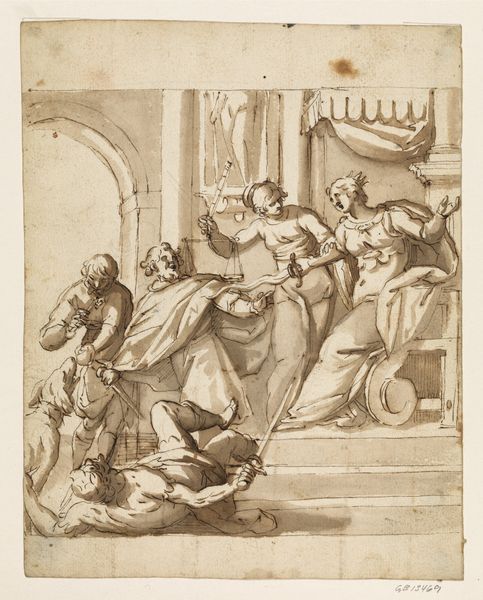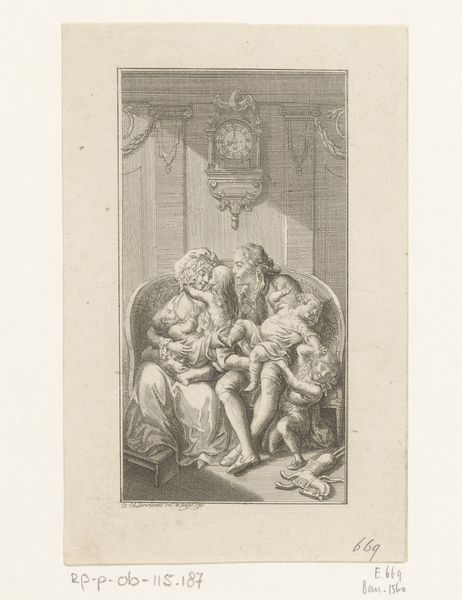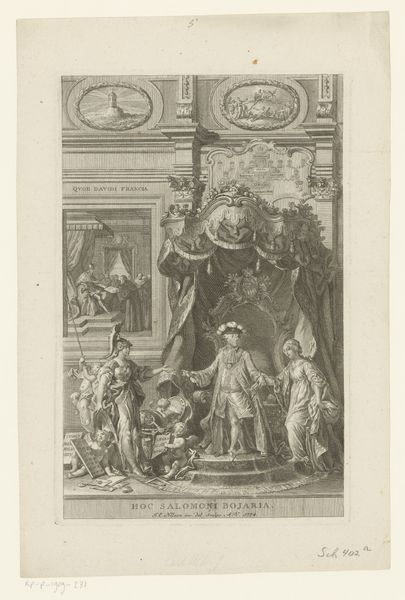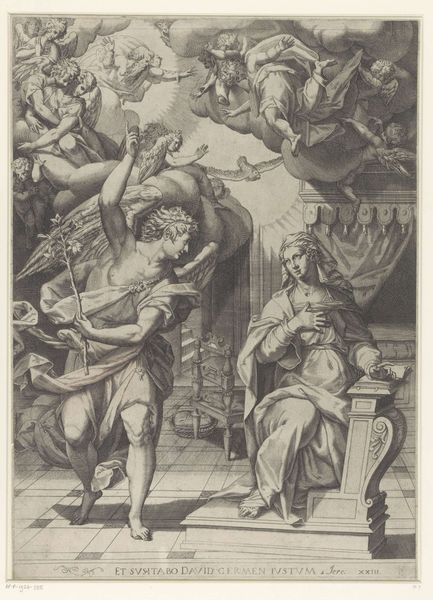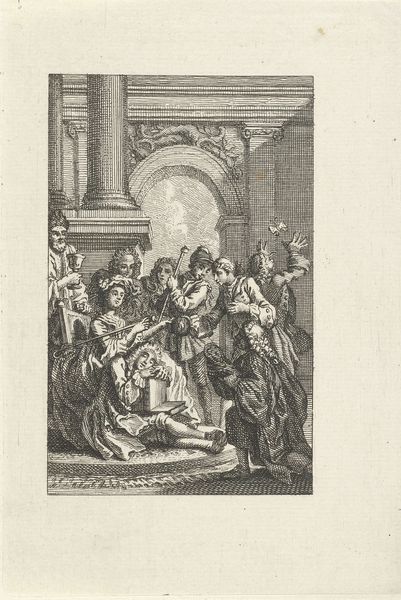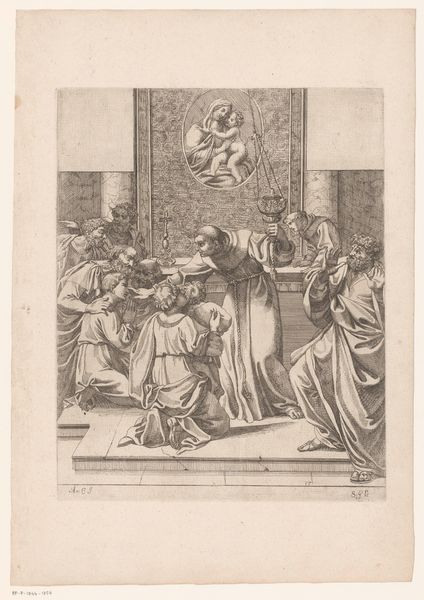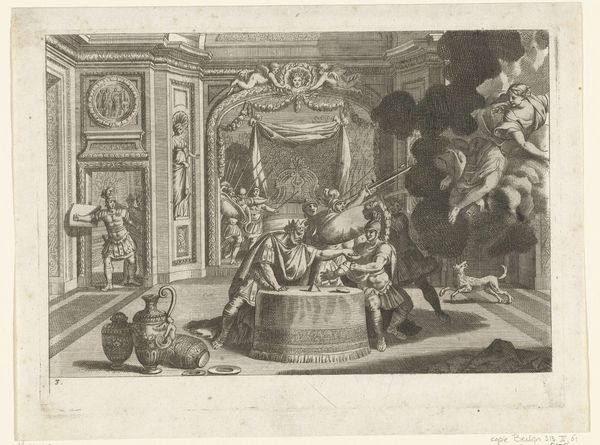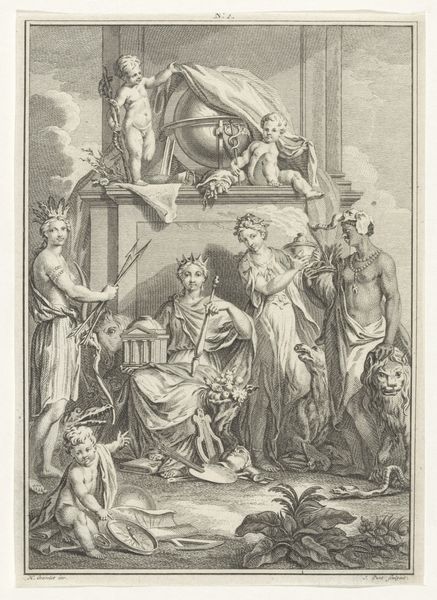
pen
#
light pencil work
#
wedding photograph
#
photo restoration
#
wedding photography
#
book
#
traditional media
#
archive photography
#
historical photography
#
old-timey
#
19th century
#
pen
#
cartoon carciture
Dimensions: height 235 mm, width 308 mm
Copyright: Rijks Museum: Open Domain
Abraham Bosse made this print, "Vision of Saint Augustine," using etching techniques, sometime in the mid-17th century. Bosse worked in France during a period of religious and political upheaval. Here, we see Saint Augustine kneeling before a vision of the Holy Trinity and Saint John the Evangelist. Images like this one played a crucial role in shaping religious identity and devotion. Consider the visual language: the ethereal clouds, divine light, and architectural setting all work together to create a sense of the sacred. Bosse was a professor at the Royal Academy of Painting and Sculpture in Paris. This institution played a key role in standardizing artistic styles and promoting certain religious and political ideologies. We can look at how the Academy influenced Bosse’s artistic choices, and how his work, in turn, reinforced the Academy’s values. To truly understand this print, we need to delve into the religious history of 17th-century France, the history of the Royal Academy, and the biography of Saint Augustine. By doing so, we can gain a deeper appreciation for the social and institutional forces that shaped this image.
Comments
No comments
Be the first to comment and join the conversation on the ultimate creative platform.

